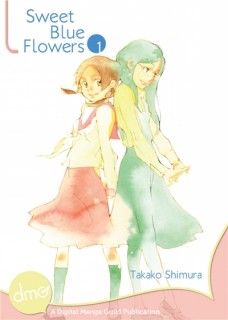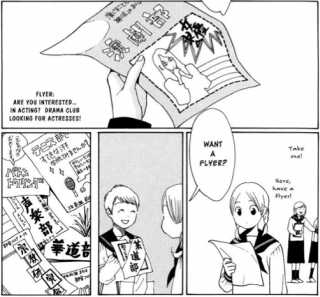Have you been checking out Kodansha Comics’ digital-only and digital-first releases? I have, and I love this initiative: it lets me sample dozens of series that might otherwise never see the light of day in North America. Rugby manga. Karuta manga. Really weird horror manga. Medical drama. Josei. As you might expect, there’s a good reason why no one was clamoring to bring out print editions of, say, Deathtopia, but lurking among the pedestrian, the awful, and the amateurish are gems such as Dragon Head, PTSD Radio, Shojo FIGHT! and Tokyo Tarareba Girls. This week, I previewed one of Kodansha’s most recent digital offerings, Starving Anonymous, which, according to Kodansha’s editorial staff, is “an intense dystopian horror thriller in the apocalyptic vein of Dragon Head and Attack on Titan, from the team that brought you zombie actioner Fort of Apocalypse.”
That’s not a bad description of Starving Anonymous; if you can imagine an Eli Roth remake of Soylent Green in all its gory, sadistic intensity, you’ll have some idea of what it’s like to read Yuu Kuraishi and Kazu Inabe’s latest effort. Like the 1973 Charlton Heston film, Starving Anonymous takes place in a heat-ravaged future where supplies are scarce, birth rates are plummeting, and people are crowded into fewer and fewer cities. The series’ protagonist is I’e, a normal high school student whose life is violently upended when he’s snatched off a bus and deposited at an enormous industrial facility where the main product is — you guessed it — people.
A concept this potentially repulsive lives or dies by the thoughtfulness of the execution, and it’s here where Kuraishi and Inabe stumble. The writing is efficient but artless, establishing the direness of the world’s condition through news flashes and pointed conversations but revealing little about I’e; he’s more a placeholder than a character, a collection of reaction shots in search of a personality. The artwork, by contrast, varies from slickly generic — Tokyo apparently looks the same 50 years from now — to willfully ugly; once inside the factory, Inabe draws rooms and conveyor belts filled with distended bodies, rendering every roll of fat and bulging eye in fetishistic detail. If Kuraishi and Inabe were trying to make a point about the ethics of factory farming, or the evils of overconsumption, that message is quickly shoved aside in favor of a more conventional escape-from-prison plot in which I’e and a group of young, healthy rebels fight their way to the outside. Nothing in the first chapter suggested that Starving Anonymous has anything on its mind other than characters doing and seeing horrible stuff, so I’ll be passing on this one.
Starving Anonymous, Chapter 1
Story by Yuu Kuraishi, Art by Kazu Inabe, Original Concept by Kengo Mizutani
Kodansha Comics
Rating: OT (Older teen)



 MICHELLE: I’m inclined to save the best for last, which means that in my personal opinion,
MICHELLE: I’m inclined to save the best for last, which means that in my personal opinion,  MJ: I’d love to! Though half the length of Red River, Kyoko Hikawa’s
MJ: I’d love to! Though half the length of Red River, Kyoko Hikawa’s  In June of 2010, Apple’s policies for adult content in the iOS App Store received a lot of attention in the comics press after Tom Bouden’s all-male graphic novel adaptation of Oscar Wilde’s The Importance of Being Earnest was rejected from the store for its very mild sexual content, while similarly non-explicit heterosexual content seemed to be flying through just fine. Though Apple eventually agreed to accept a censored version of Bouden’s comic, Prism Comics founder Charles “Zan” Christensen gave voice to the thought on everyone’s mind at the time in his article, “
In June of 2010, Apple’s policies for adult content in the iOS App Store received a lot of attention in the comics press after Tom Bouden’s all-male graphic novel adaptation of Oscar Wilde’s The Importance of Being Earnest was rejected from the store for its very mild sexual content, while similarly non-explicit heterosexual content seemed to be flying through just fine. Though Apple eventually agreed to accept a censored version of Bouden’s comic, Prism Comics founder Charles “Zan” Christensen gave voice to the thought on everyone’s mind at the time in his article, “























 After doing my duty on Facebook, I clicked over to the main site to get my free manga, and encountered possibly the most maddening registration/login process I’ve dealt with in years. Though I’d apparently created an account back when they first launched (which I discovered when my chosen username was already in use), even after going through their process to recover my password, I then had to log in at least three times, on three different pages, before even getting to the page where I could actually pick out my free manga.
After doing my duty on Facebook, I clicked over to the main site to get my free manga, and encountered possibly the most maddening registration/login process I’ve dealt with in years. Though I’d apparently created an account back when they first launched (which I discovered when my chosen username was already in use), even after going through their process to recover my password, I then had to log in at least three times, on three different pages, before even getting to the page where I could actually pick out my free manga.  After my experience with Square Enix, the idea of trying to navigate yet another online manga portal was difficult to stomach, but Viz Manga’s new initiative, Vizmanga.com, was a bit too enticing to ignore. Working in sync with Viz’s mobile apps, Vizmanga.com offers the opportunity to buy volumes of digital manga via any one of its available portals, and then read those volumes using any of them, with the user’s purchased manga always available for download on any supported device.
After my experience with Square Enix, the idea of trying to navigate yet another online manga portal was difficult to stomach, but Viz Manga’s new initiative, Vizmanga.com, was a bit too enticing to ignore. Working in sync with Viz’s mobile apps, Vizmanga.com offers the opportunity to buy volumes of digital manga via any one of its available portals, and then read those volumes using any of them, with the user’s purchased manga always available for download on any supported device.